Built on a creamy custard base, German buttercream is super luscious and not overly sweet. It is perfect for piping, lovely for spreading and tempting to eat right off the spatula!
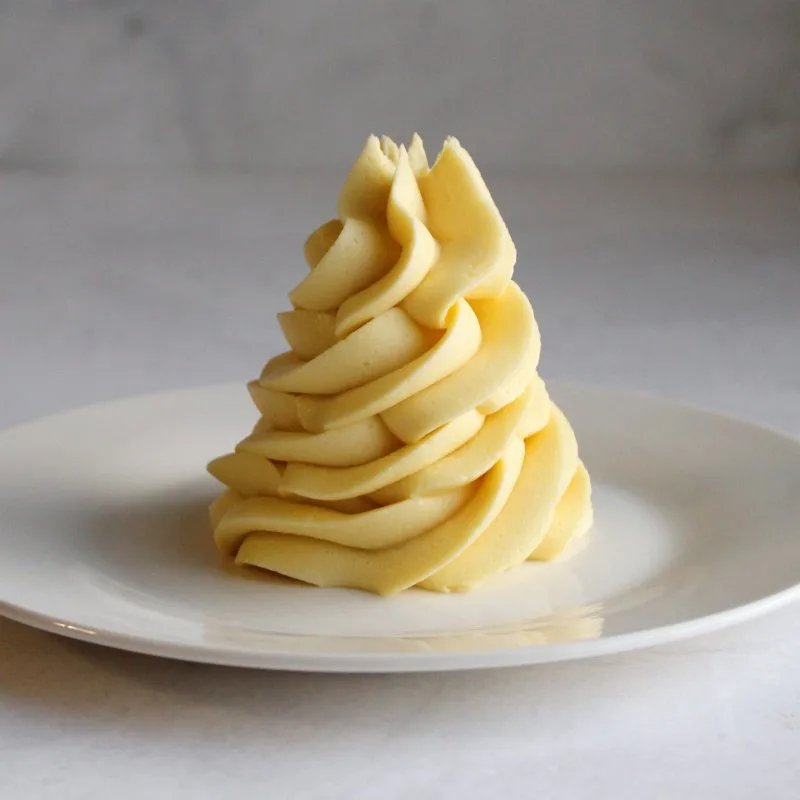
If you are looking for a super creamy and sumptuous frosting, you have come to the right place. German buttercream involves making a thick custard base and whipping in butter to make it fluffy and delicious. This vanilla version is just the tip of the iceberg of flavor possibilities.
German buttercream has a few steps to the process, but don’t let that scare you off. It is really pretty simple and the custard base can be made days in advance, so there’s not a ton to do the day of.
I have been curious about German buttercream ever since I saw Kelsey from the Itsy Bitsy Kitchen make it for her Danube Waves cake. The idea of a custardy buttercream drew me in.
A buttercream variety I haven’t tried yet always piques my curiosity. Especially one that has roots in my heavily German heritage.
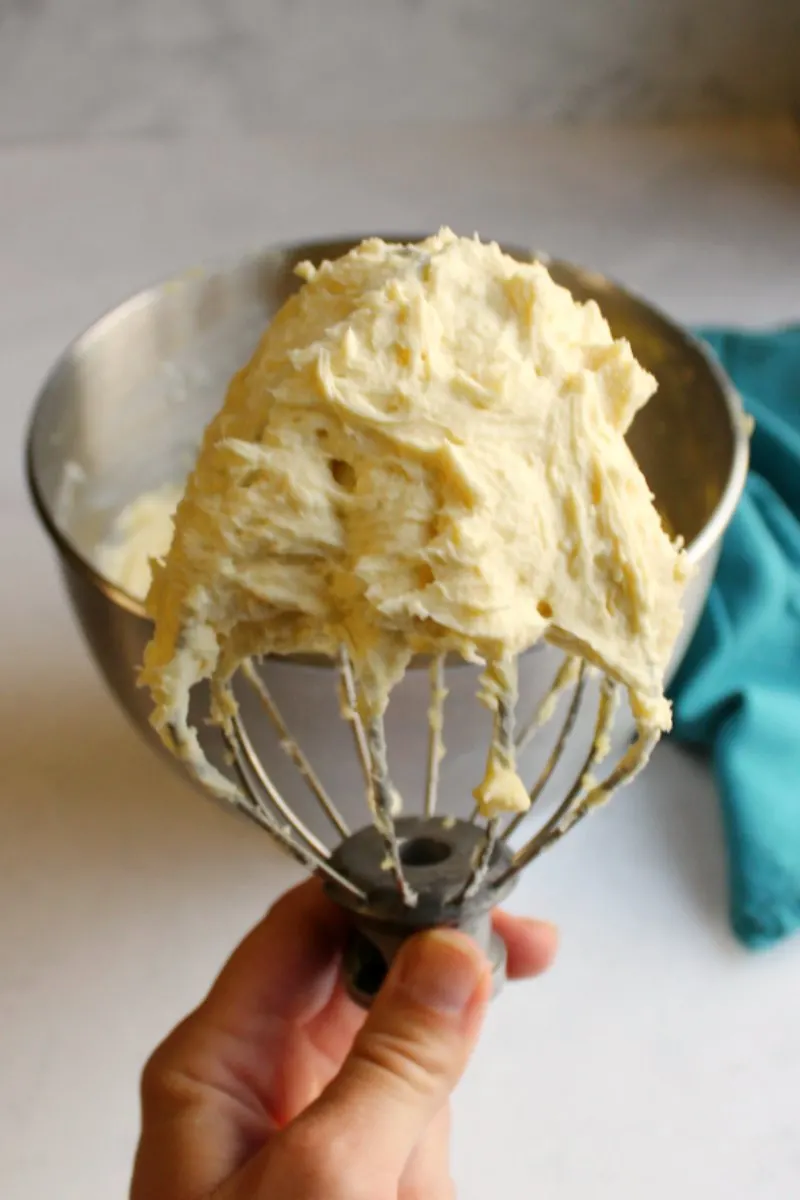
I did a fair amount of research into recipes. As these things go there are several different methods you can use.
There were also several different ratios of ingredients. I ended up sort of forging my own path through the middle of all of the recipes I read.
The results were so good. Like you may expect it tastes like a really silky pudding, but can definitely do things pudding can’t.
I spread this batch over a yummy chocolate and cherry cake and spread dark chocolate ganache over it to make a Black forest style sheet cake. I’m looking for an excuse to make it again soon!
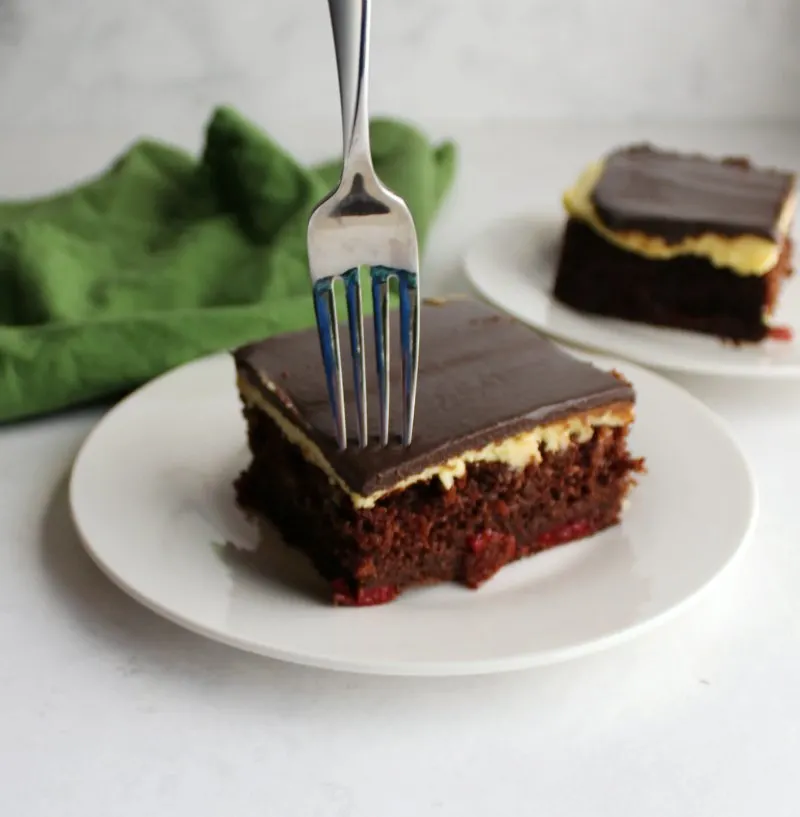
Don’t worry, I’ll share the recipe on Friday. I think this creamy vanilla goodness would also be fabulous on a layer cake with fruity fillings.
Let your imagination be your guide and then show me pictures so I can copy you! 💕
Step by Step Explanation for Making German Buttercream With Pictures

First mix together half of the granulated sugar and the cornstarch in a heat resistant bowl.
Next beat in the eggs until the mixture is smooth. Now set the bowl by the stove and get the milk mixture ready.
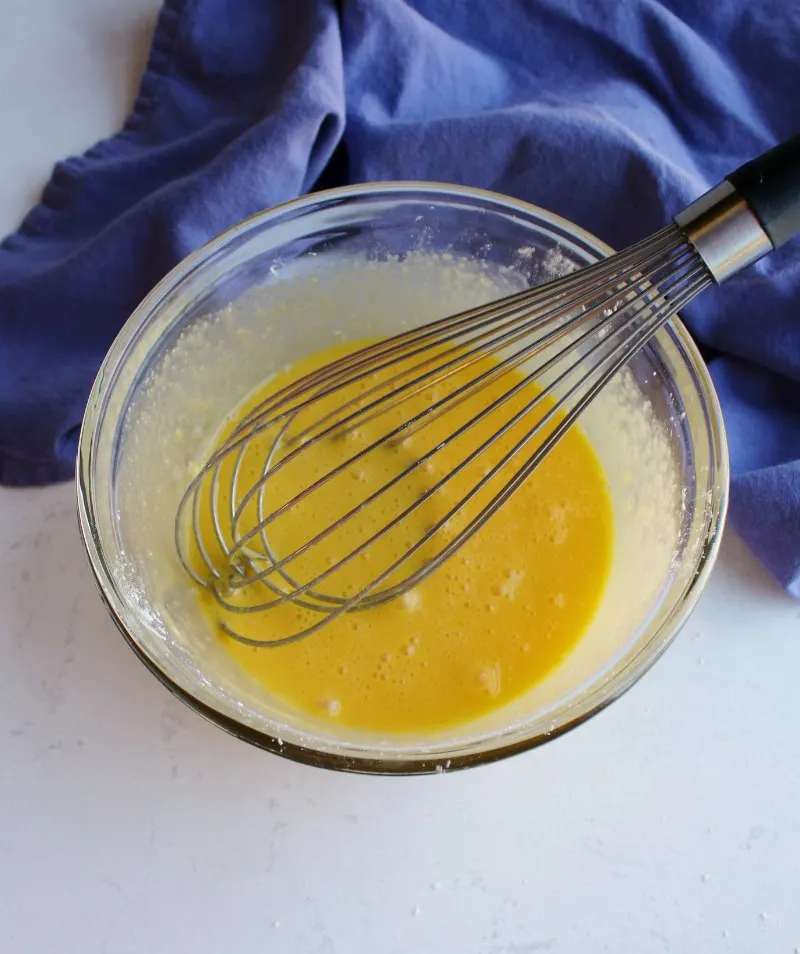
In a large sauce pot or saucier, stir together the milk and the remaining granulated sugar. Bring to a simmer over medium heat, stirring occasionally.
Once the mixture is simmering, take about 1/3 of a cup or a small ladle full of the hot mixture and add it to the egg mixture while stirring to temper it. Mix it in well.
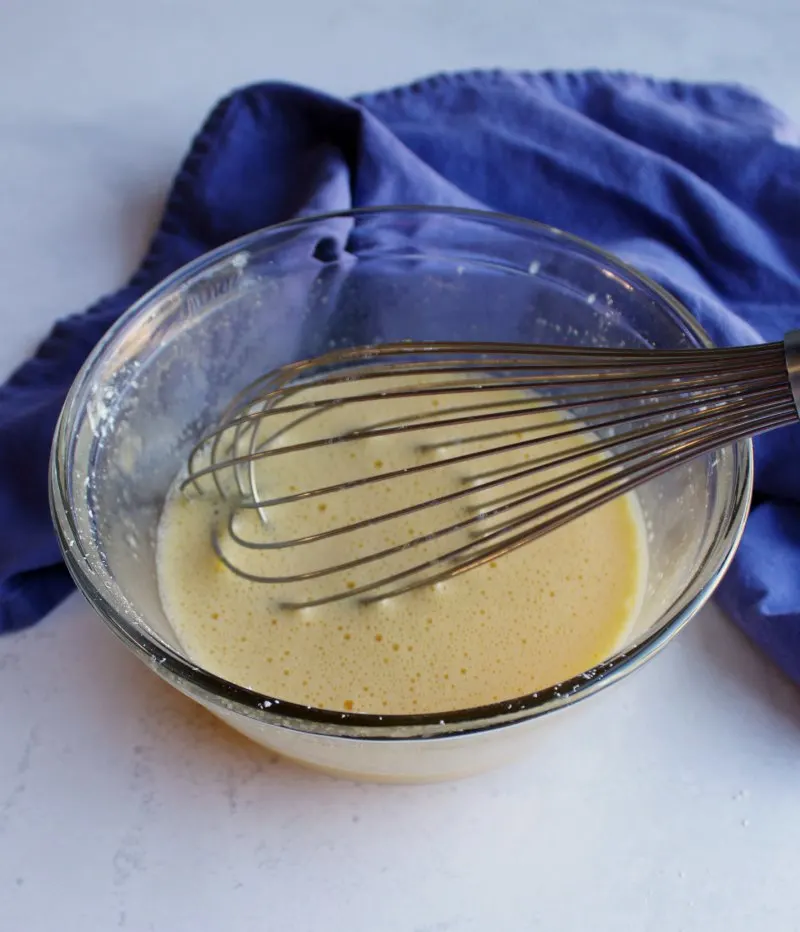
Slowly drizzle the tempered egg mixture into the simmering milk while beating vigorously. There are no pictures of this stage as it took all of my hands to drizzle and mix!
Continue to cook and stir over medium-low heat until the mixture starts to thicken. It may get a little lumpy at this stage and that’s ok.
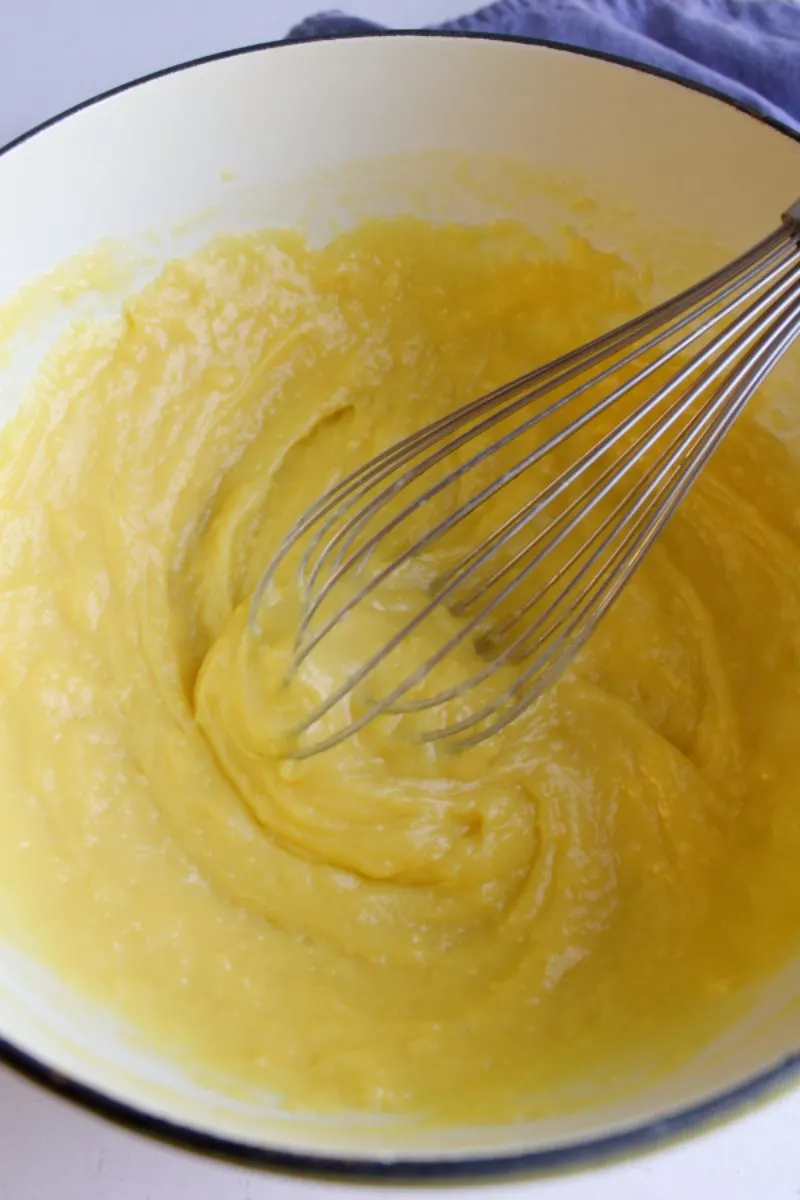
Just be sure to keep stirring and keep it from scorching. It shouldn’t take very long at all.
Once the mixture is thickened to about the consistency of a tight pudding, turn the heat to low and really beat the mixture to get the lumps out.
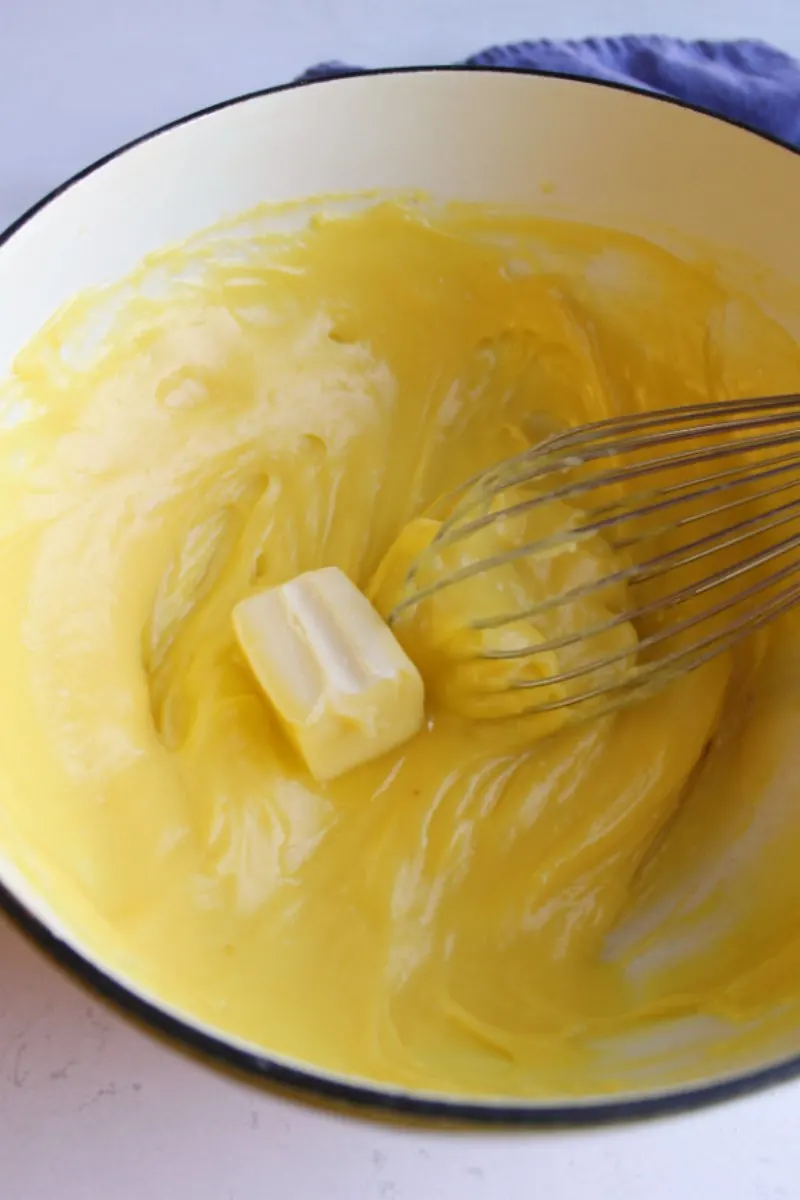
Remove from heat and stir in two Tablespoons of butter. The mixture should be pretty thick, but still soft.
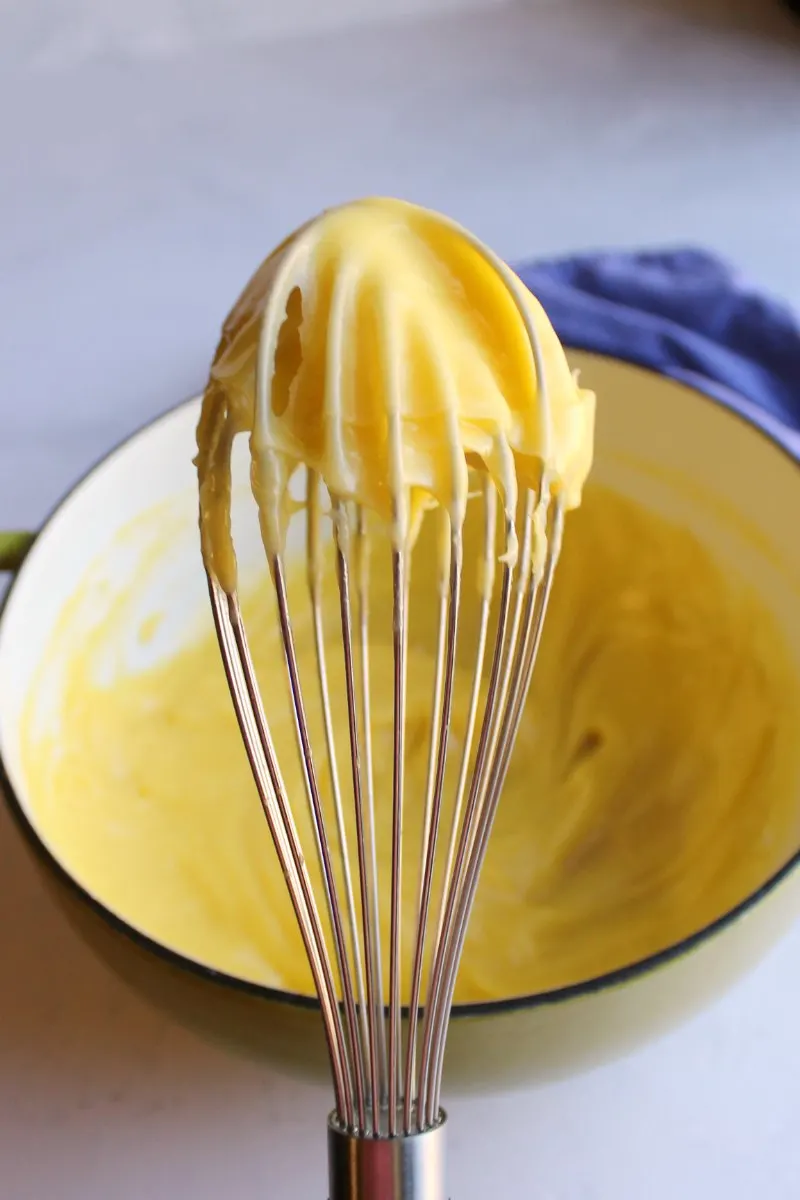
It was able to hold on to the whisk for a few seconds like this before it started to fall. The consistency should be that of a thick pudding while warm.
Place a sheet of plastic wrap over the top of the custard with the wrap touching the top to avoid forming a skin. Now refrigerate the mixture for at least an hour.
Once it is chilled it should be really thick, almost more of a smooth cookie dough consistency. Set it on the counter along with your butter when you pull the butter out to soften. They will mix together better if they are at the same temperature.
Once the butter is softened, beat it until it is smooth and creamy. Be sure to scrape the sides of the bowl along the way.
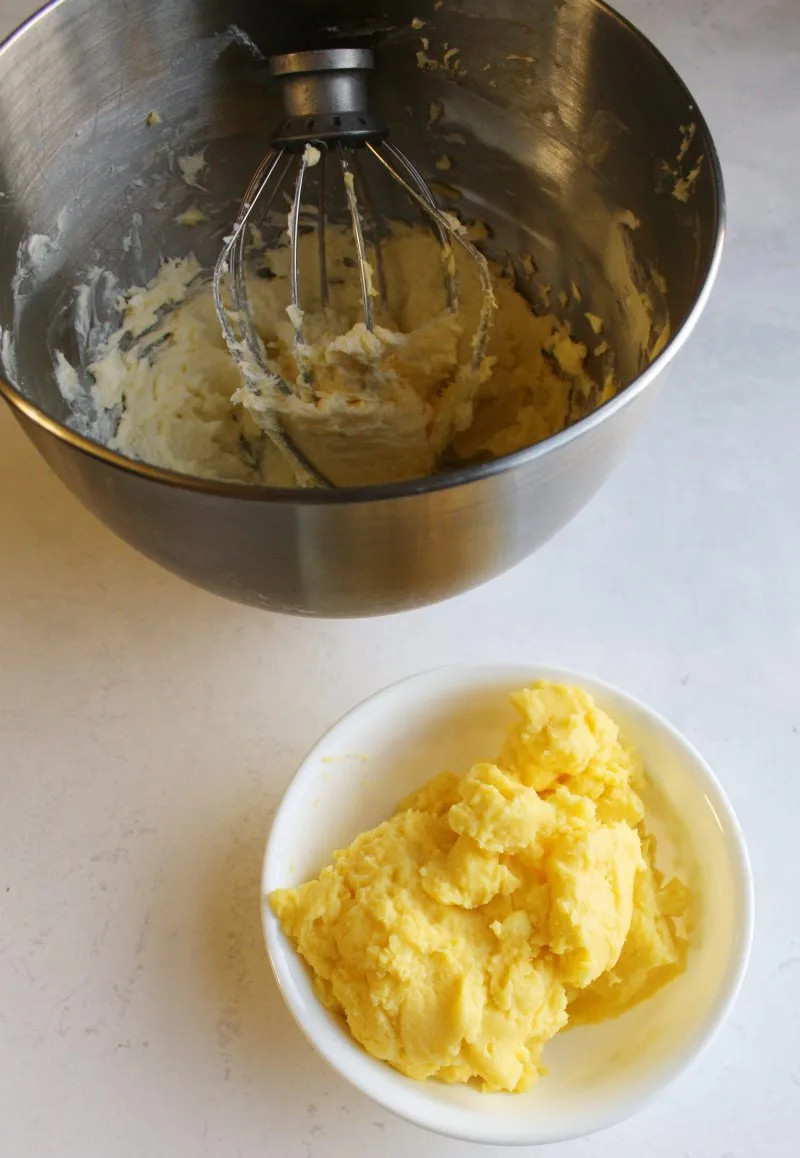
Now add a Tablespoon or two of custard and a time, beating well between each addition. Once it is all added, beat well until the mixture is really fluffy.
Add vanilla and beat a little more. Now your frosting is ready to go on your cake!
Uses and Limitations of German Buttercream
This frosting is perfect for spreading over sheet cakes, using as a filling for layer cakes or piping on top of cupcakes.
If you want super white frosting, this recipe isn’t the one. The egg yolks in the custard are going to give a creamy yellow hue no matter how long you whip it.
Mine might be a bit more yellow than most because I used eggs from my parents farm and their yolks are super yellow and rich. If you want a pure white frosting, maybe you should check out Italian meringue buttercream instead.
I haven’t tested the longevity in heat, but I wouldn’t pick it as a first choice if I knew my cake would be subjected to a long stretch of warmth.
There is no powdered sugar to help with stability. The other trick to helping a crusting buttercream hold up is to replace some of the butter with shortening.
Shortening’s higher melting point helps keep it in place longer. With the dairy forward flavor of this custardy German frosting, I don’t think I’d recommend a shortening swap.
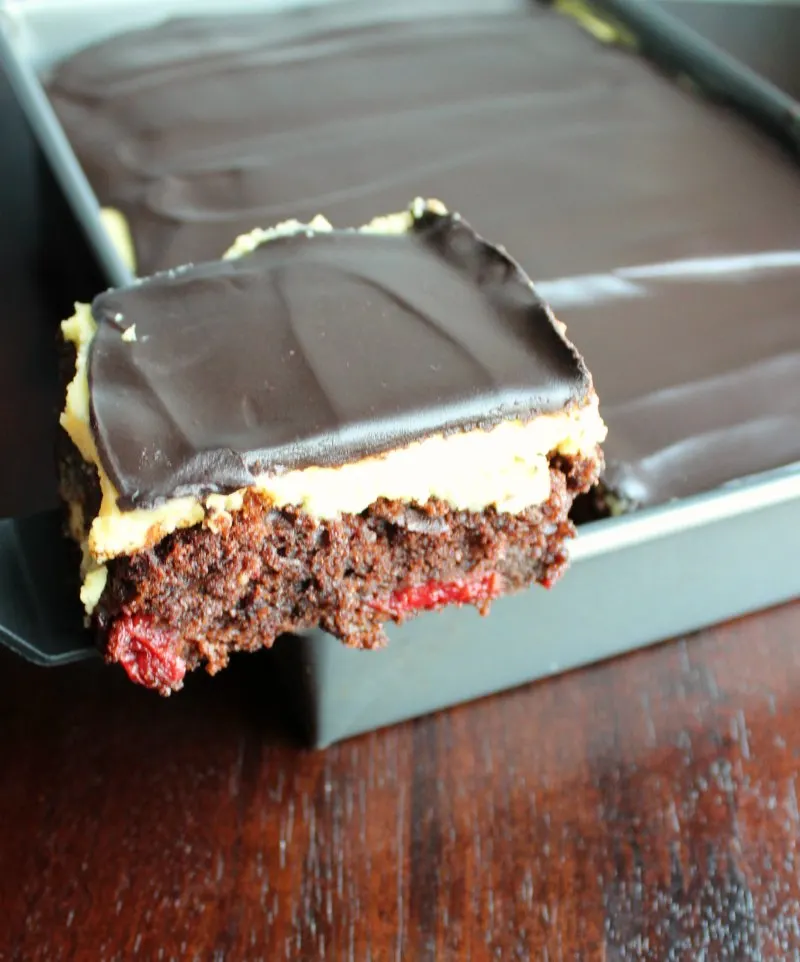
You could steep any number of flavors into the milk before you make the custard. Use tea bags, vanilla beans or whole spices to impart flavor then use the flavored milk to make fabulous frosting.
If your frosting is too soft, your butter was likely over softened. Try putting the frosting in the fridge for a bit to set up. If that doesn’t work, the custard might have been too loose. Try beating in a cup of powdered sugar to thicken it up.
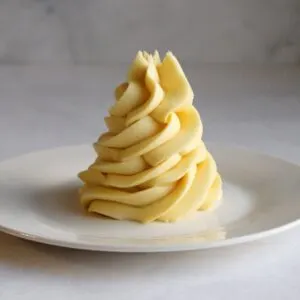
Vanilla German Buttercream
Ingredients
- ½ cup granulated sugar divided
- ¼ cup cornstarch
- 2 large eggs
- 1 cup whole milk
- 2 Tablespoons unsalted butter
- 1 cup unsalted butter
- 2 teaspoons vanilla extract
- 1 pinch salt
Instructions
- Mix together ¼ cup of granulated sugar and the cornstarch in a heat resistant bowl.¼ cup cornstarch
- Beat the eggs into the sugar and cornstarch mixture until the mixture is smooth. Set the bowl by the stove and get the milk mixture ready.2 large eggs
- In a large sauce pot or saucier, stir together the milk and the remaining ¼ cup of granulated sugar. Bring to a simmer over medium heat, stirring occasionally.1 cup whole milk
- Once the mixture is simmering, take about 1/3 of a cup or a small ladle full of the hot mixture and add it to the egg mixture while stirring to temper it. Mix it in well.
- Slowly drizzle the tempered egg mixture into the simmering milk while beating vigorously.
- Continue to cook and stir over medium-low heat until the mixture starts to thicken. It may get a little lumpy at this stage and that’s ok.
- Once the mixture is thickened to about the consistency of a tight pudding, turn the heat to low and really beat the mixture to get the lumps out.
- Remove from heat and stir in two Tablespoons of butter. The mixture should be pretty thick, but still soft.2 Tablespoons unsalted butter
- Place a sheet of plastic wrap over the top of the custard with the wrap touching the top to avoid forming a skin. Now refrigerate the mixture for at least an hour.
- Once it is chilled it should be really thick, almost more of a smooth cookie dough consistency. Set it on the counter along with your butter when you pull the butter out to soften. They will mix together better if they are at the same temperature.
- Once the butter is softened, beat it until it is smooth and creamy. Be sure to scrape the sides of the bowl along the way.1 cup unsalted butter
- Now add a Tablespoon or two of custard and a time, beating well between each addition. Once it is all added, beat well until the mixture is really fluffy.
- Add vanilla and salt and beat a little more. Now your frosting is ready to go on your cake!2 teaspoons vanilla extract, 1 pinch salt
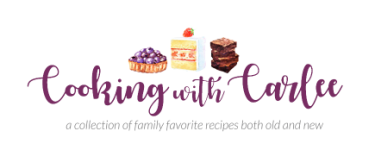
Rhianna
Thursday 20th of April 2023
Please, I've been looking everywhere but I can't find one, so I thought I'd modify this recipe.
Can I add lemon curd to the custard before it gets whipped to make a tart lemon frosting ??
I just want to make a quality lemon curd frosting without powdered sugar !
Rhianna
Thursday 27th of April 2023
@Carlee, that sounds incredible. I made a thick lemon custard last night, and I'm going to give two different ones a try. The curd whipped in with the custard and butter, and the curd in place of the custard. ❤️❤️❤️
And I will be trying that dip. Holy sh*t does that sound amazing.
Carlee
Friday 21st of April 2023
I haven't tried it, but I almost wonder if you couldn't use a thick lemon curd in place of the custard. I have mixed lemon curd and cream cheese together for a fruit dip and it was relatively stiff. So I would think you could get a frosting consistency, though maybe not stiff enough to pipe with.
Carlee
Tuesday 6th of August 2019
Thank you!
Amy
Friday 2nd of August 2019
It actually surprises me when you are able to come up with a Frosting that you haven't made before. This sounds scrumptious! I think that I could make a menu from your Frostings and just eat them all day!
Carlee
Tuesday 6th of August 2019
It surprises me a little too ;-) Now I'm on a mission to find more!
kitty@ Kitty's Kozy Kitchen
Thursday 25th of July 2019
This looks so luscious and lovely, Carlee! I’m sure the eggs from your parents’ farm made the buttercream extra yummy!
Carlee
Tuesday 6th of August 2019
Fresh eggs really are sooooo good! Thank you!
Andrea Nine
Wednesday 24th of July 2019
My Buttercream Babe has done it again! This look AHHMAZING!!!
Carlee
Tuesday 6th of August 2019
Ha! Thank you!!!